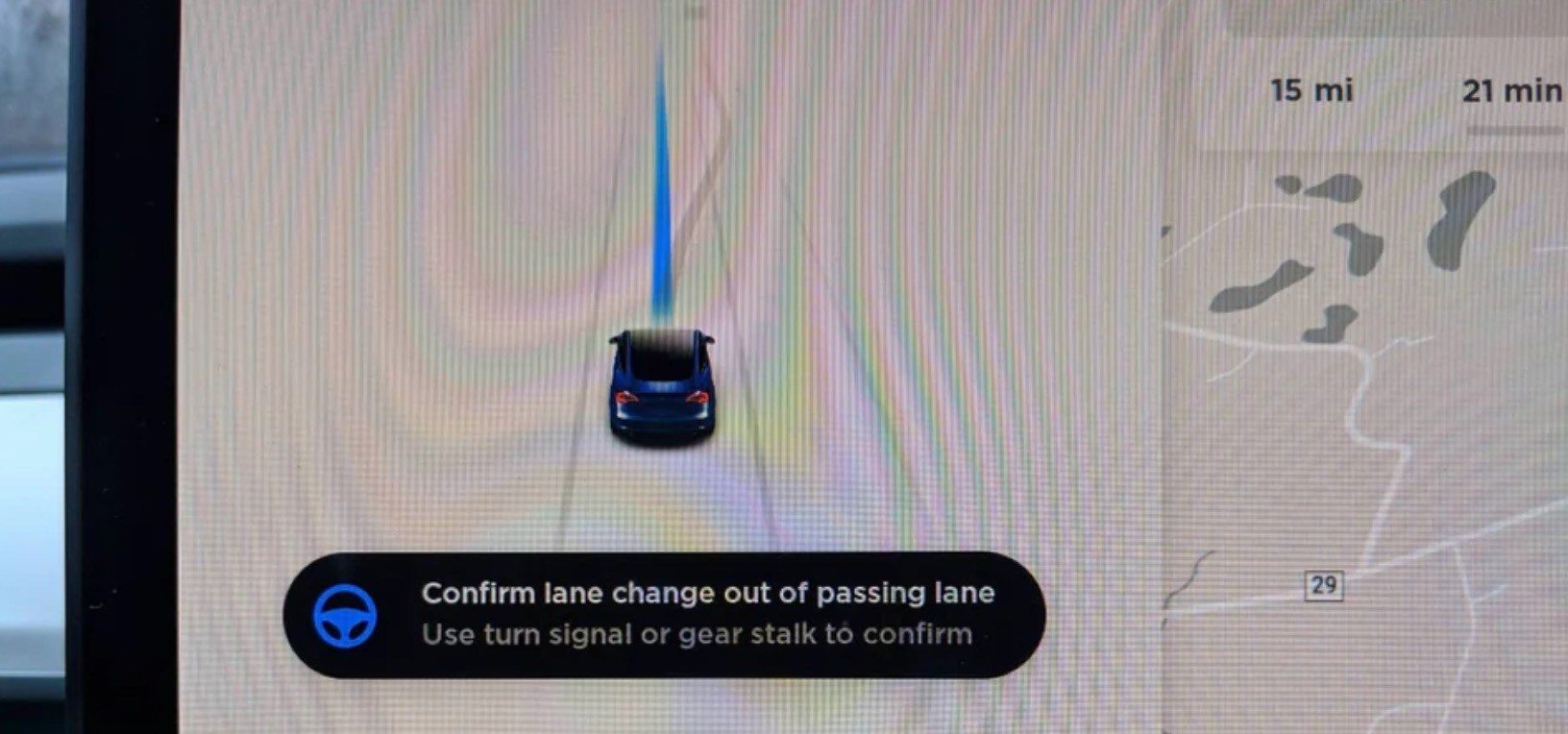Tesla has started pushing a new software update enabling Autopilot to stay in the passing lane instead of moving back to the right lane like you normally should.
Self-driving vehicles have the potential to greatly alleviate traffic by simply driving in better and more appropriate ways than the average human driver.
Two things that make a big difference are simply keeping a more reasonable following distance with the car in front and staying out of the passing lane when you are not passing.
These two things are quite simple and if they were respected by everyone, they would greatly improve the flow of traffic, but unfortunately, too many drivers ignore those rules.
Tesla’s Autopilot has already been taking those rules into account. The driver-assist system can be set at a reasonable following distance and since December 2018, Tesla’s Navigate on Autopilot feature has been suggesting people to move back into the right lane after passing.
Surprisingly to some, Tesla has now started pushing a new software update to give the driver the option to stay in the passing lane.
Tesla introduced a new ‘Exit Passing Lane’ feature in its 2020.36.10 software update:
“While Navigate on Autopilot is activated, your car can now remain in the passing lane. To adjust your passing lane preference, tap Controls > Autopilot > CUSTOMIZE NAVIGATE ON AUTOPILOT > EXIT PASSING LANE.”
The feature now makes exiting the passing lane optional — meaning that owners need to activate it in the settings in order for the vehicle to automatically go back to the right lane.
Prior to the update, Tesla owners already had the option to cancel an automatic lane change if they didn’t agree with it.
Electrek’s Take
This might seem like a move backward for Tesla Autopilot, but it is actually something that should remove frustration while Tesla improves on the lane changing logic.
In my experience, it is one of the most frustrating part of using Navigate on Autopilot.
I find that it will sometimes take too much time to go back to the right lane after safely passing a car — slowing down traffic in the passing lane or go back to the right lane too quick if there’s still another car that needs passing in a second and no one else is coming in the passing lane.
Now that I can deactivate it, I don’t know if I would, but I like having the option.
What do you think? Let us know in the comment section below.
FTC: We use income earning auto affiliate links. More.
Subscribe to Electrek on YouTube for exclusive videos and subscribe to the podcast.
